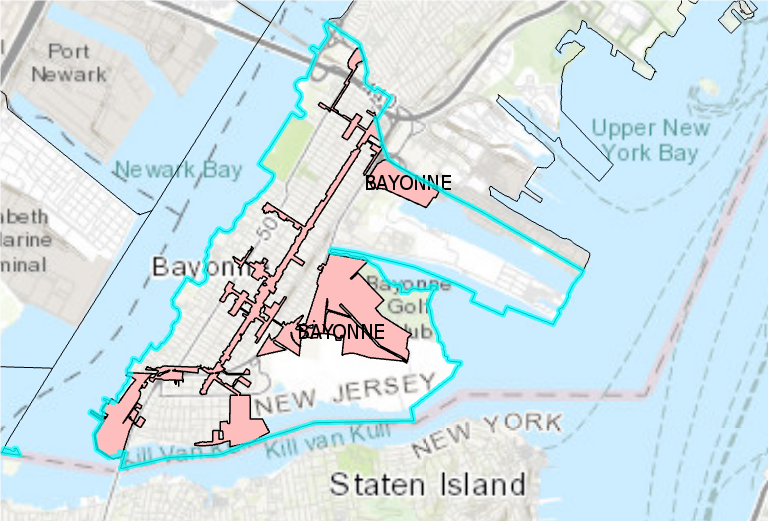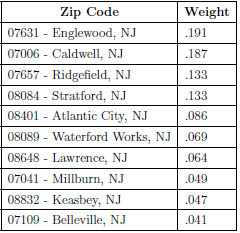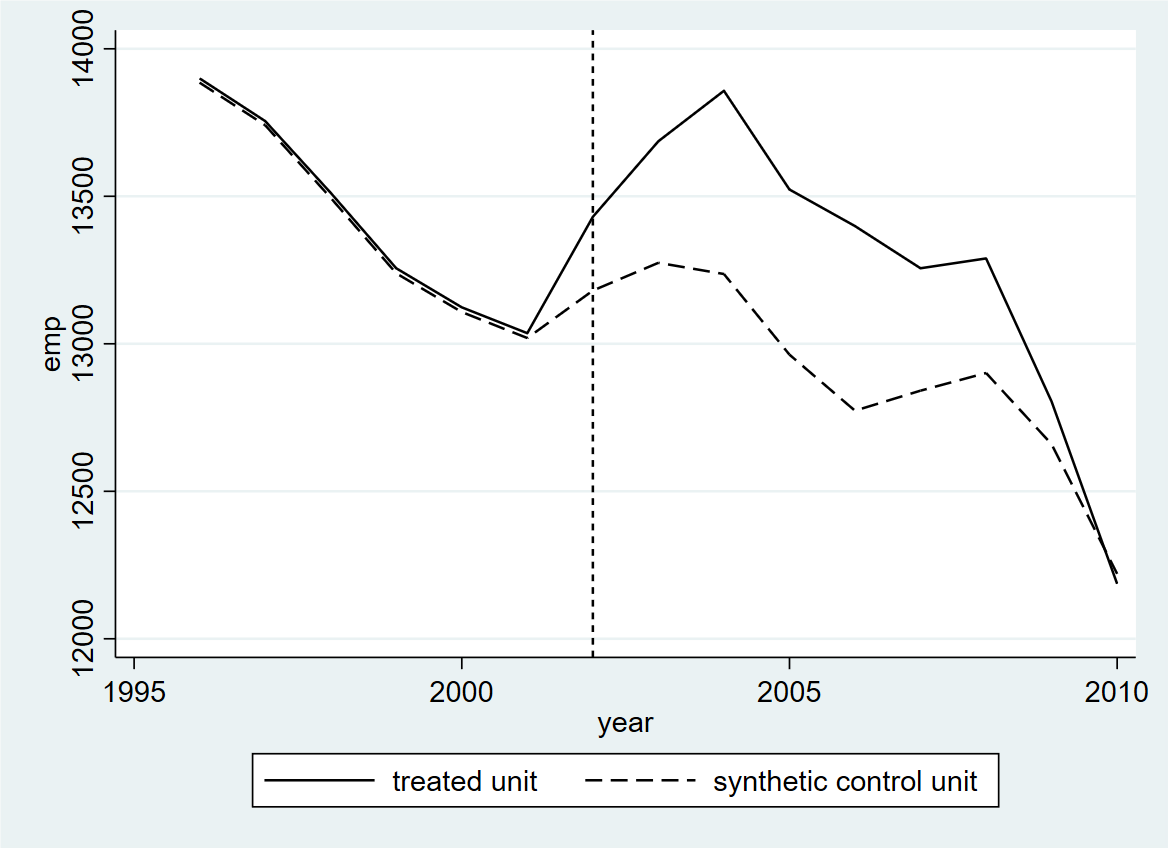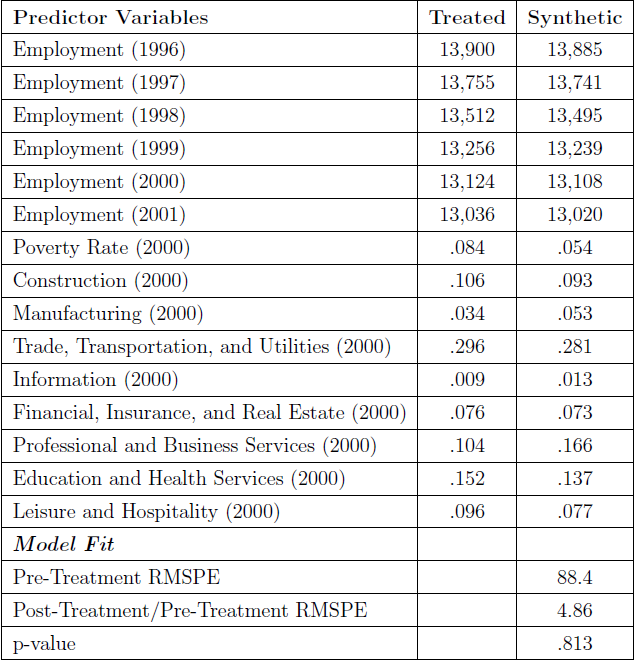Last summer, then acting New Jersey Governor Sheila Oliver signed legislation to devote $42.5 million toward restoring the state’s Urban Enterprise Zones (UEZ) to full operation for fiscal year 2022. In this piece, I discuss the history and performance of UEZs and opportunities to increase their effectiveness.
The UEZ program is designed to encourage economic development by providing tax breaks (notably, halving the state sales tax) to participating businesses in selected distressed communities. The program is one of dozens of enterprise zone programs established at the state and federal level since the 1970s. Despite many evaluations, it is not yet entirely clear that such policies stimulate economic development. For this reason, I take a brief look at the history of enterprise zones, how to assess their success as a policy tool, and what features might improve New Jersey’s program in today’s economic environment.
The History of Enterprise Zones
The designation of enterprise zones is a type of place-based economic development policy to revitalize blighted areas. Around since the end of World War II, place-based policies initially focused on relocating large companies to specific areas (e.g., Amazon HQ2). By the 1980s, policies refocused on the expansion and retention of small and medium firms already in blighted areas. Enterprise Zones are one such policy; they rely on tax incentives to local firms for hiring, capital investment, and facility expansion. The intended outcome of such policies is to improve the local economy by increasing employment through encouraging hiring and investment at new and existing firms.
New Jersey’s Urban Enterprise Zone Program
New Jersey’s UEZ program was established in 1983. Participating businesses receive a reduced sales tax (half the state-wide rate) as well as tax-free purchases on capital equipment, facility expansions, and upgrades. The first five municipalities (Bridgeton, Camden, Newark, Trenton, and Plainfield) joined the program in 1986: the most recent municipalities (New Brunswick and Gloucester City) joined in 2004. At that juncture, it covered 32 zones in 37 municipalities across the state.
Another feature of the UEZ program includes Zone Assistance Funds (ZAF)—flexible revenue sources for communities to use for economic development activities. Participating municipalities have used ZAFs to remediate properties, build infrastructure, and support economic development project gap funding. As an example, the City of Trenton used $433,000 in ZAFs for street improvements needed for the Roebling Market, a 142,000 square foot shopping center in a former steel mill. ZAFs were discontinued in 2011 when the Christie Administration suspended payments to the zones in favor of balancing the state’s budget (Christie vetoed renewal plans for the five original zones six years later). Last summer’s UEZ legislation restored the ZAFs for the first time in ten years.
Policy Effectiveness
Many states have similar programs in place, and these zones have been heavily studied for decades. Given this cacophony of research, do UEZs deliver what they promise or not? The short answer is the findings remain “inconclusive.” It seems that enterprise zones create no or few jobs in the short run.[1] More specifically, studies of New Jersey’s first UEZs find no discernible impact on economic development. [2],[3]
Historically, there are many problems with the manner in which researchers have assessed the effectiveness of UEZs; and this has led referees to question the apparent success or failure of such policies. Perhaps the most difficult challenge that evaluators of enterprise zones face is identifying a sound set of control communities against which achieved outcomes for selected measures in treated areas can be contrasted. After all, these areas were designated as enterprise zones (treated) for a reason when the comparison communities (control) were not.[4] In other words, in order to assess the success of the policy, researchers have tended to resort to difference-in-difference techniques when figuring out what might have happened to the participating area if it had not received enterprise zone benefits.
The research that I report here focuses on the five zones that were most recently admitted to New Jersey’s program: Bayonne, Roselle, The Wildwoods, New Brunswick, and Gloucester City. Rather than use “similar communities,” I, instead, manage the dilemma of the control communities by using a somewhat new approach called the “synthetic control method.” This technique creates counterfactuals, in this case by gathering together parts of other communities, that are as identical as possible based on criteria that have been identified as critical to an evaluation of a policy’s effects.
For example, in order to evaluate the effectiveness of Bayonne’s enterprise zone (see Figure 1) on local employment, I created a “synthetic Bayonne.” This “synthetic Bayonne” is “Frankenstein-ed” together by weighting portions of municipalities in New Jersey that, when cobbled together, have nearly identical pre-treatment poverty rates, industry mixes, and employment levels, to the City of Bayonne (see Figure 4 for details). Figure 2 shows that Englewood, Caldwell, and Ridgefield contributed most to synthetic Bayonne.
Figure 3 displays the results of the model estimation. The solid line indicates Bayonne’s actual level of payroll employment, and the dashed line indicates the same for synthetic Bayonne. The vertical dashed line indicates the first year (2002) that Bayonne received UEZ treatment. The tight relationship between Bayonne and its synthetic control before 2002 suggests that they, indeed, had similar trajectories before Bayonne’s UEZ designation that year. Results indicate that Bayonne’s payroll employment outperformed its synthetic control over most of the treatment horizon. By the final year, however, the two were nearly the same again. Furthermore, the difference between the two over the treatment horizon is not statistically significant from zero. That is, the net impact of Bayonne’s UEZ is, at best, negligible. This comports with results from the other approaches that find insignificant impacts of UEZs on employment levels.
What Lies Ahead?
The State of New Jersey has renewed its Urban Enterprise Zone (UEZ) program and re-equipped them with Zone Assistance Funds (ZAFs), which offer flexible funding sources for the zone’s communities. To date, my research confirms previous findings that suggest the policy does not produce sustained job growth. This finding is not just for Bayonne, which I report on here as an example, but also for all five of the most recent UEZ communities through the first eight years following their implementation.
But we should understand that the pandemic-related labor shortages in the United States suggest that any policies that attempt to stimulate labor demand (via job opportunities) without increasing labor supply (via the number of people participating in the labor force) are likely to be ineffective. On the bright side, the flexibility of the ZAFs could allow zone municipalities to utilize strategies to lure residents into the labor force. Research suggests that training programs targeted to residents, who are unemployed or not participating in the labor force, complement traditional place-based policies that seek to stimulate labor demand at local firms.[5]
In the current economic environment, finding a job posting is much easier than finding a qualified applicant. Therefore, dedicating funding to target potential workers could enhance the program’s success as an economic development strategy.
Adam Scavette is a doctoral student at the Bloustein School of Rutgers University. This blog post has been adapted from his forthcoming dissertation essay “The Impact of New Jersey’s Urban Enterprise Zones on Local Employment: A Synthetic Control Approach.”
The views expressed here are those of the author and do not reflect the official policy or position of his employer.
Figure 1: Map of Bayonne’s Urban Enterprise Zone highlighted in pink
with encompassing Zip Code 07002 outlined in blue

Figure 2: Bayonne’s Synthetic Control Weights

Figure 3: Synthetic Control Results: Bayonne

Figure 4: Predictor Balance and Model Fit: Bayonne

References
[1] Neumark, David & Helen Simpson. (2015). “Place-based policies,” Chapter 18 in Gilles Duranton, J. Vernon Henderson, & William C. Strange (eds), Handbook of Regional and Urban Economics, vol. 5, Amsterdam: Elsevier, pp. 1197-1287. https://www.sciencedirect.com/science/article/abs/pii/B9780444595317000181
[2] Greenbaum, Robert T. & John B. Engberg. (2004). The Impact of State Enterprise Zones on Urban
Manufacturing Establishments. Journal of Policy Analysis and Management, 23, 315–339.
[3] Boarnet, Marlon G. & William T. Bogart, W. (1996). Enterprise Zones and Employment: Evidence from New
Jersey. Journal of Urban Economics, 40, 198–215.
[4] Boarnet, Marlon G. (2001). Enterprise Zones and Job Creation: Linking Evaluation and Practice.
Economic Development Quarterly, 15, 242–254.
[5] Crisp, Richard, Tony Gore, Sarah Pearson, & Peter Tyler, with David Clapham, Jenny Muir, & Douglas Robertson. (2014). Regeneration and Poverty: Policy and Practice Review. A report for the Joseph Roundtree Foundation by the Centre for Regional Economic and Social Research (CRESR), Sheffield Hallam University, University of Reading, Queens University Belfast, University of Stirling and University of Cambridge. Available online in May 2022 from https://shura.shu.ac.uk/18990/1/CrispRegenerationPoverty%28VoR%29.pdf
